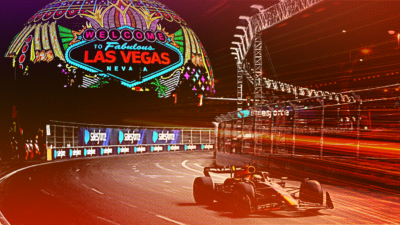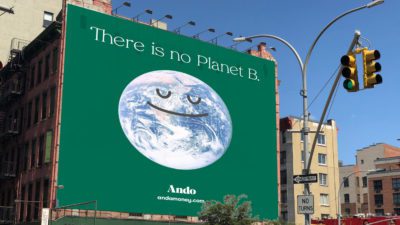Introduction
Imagine the deafening roar of engines, the blur of sleek cars hurtling around corners at breakneck speeds, and the palpable tension in the air. This is Formula 1 (F1) racing—an adrenaline-fueled spectacle that has captivated audiences for decades. But F1 is no longer just about the thrill of the race; it has evolved into a dynamic stage where global brands showcase their prowess. From luxury giants to tech innovators, brands are shaping the very essence of F1. Dive into the world where high-speed racing meets high-stakes marketing, and discover how branding has transformed F1 from a niche sport into a global phenomenon.
The Evolution of Branding in F1
From Car Logos to Comprehensive Brand Experiences
In the early days of F1, branding was mostly limited to logos on cars and sponsorship banners around the track, from tobacco companies like Marlboro and Camel to watchmakers such as TAG Heuer. While viewership was global, it was still a niche sport with select viewership. That all changed with the arrival of the Netflix series “Drive to Survive,” which revolutionized the perception of F1, transforming it from a niche sport into mainstream entertainment with a vast global reach.
In the early days of F1, branding was mostly limited to logos on cars and sponsorship banners around the track, from tobacco companies like Marlboro and Camel to watchmakers such as TAG Heuer. While viewership was global, it was still a niche sport with select viewership. That all changed with the arrival of the Netflix series “Drive to Survive,” which revolutionized the perception of F1, transforming it from a niche sport into mainstream entertainment with a vast global reach.
This newfound popularity has attracted a surge of brands eager to capitalize on F1’s extensive audience, recognizing it not just as a sporting event but as a powerful entertainment sponsorship opportunity. By bringing the drama and excitement of F1 into the everyday lives of viewers, “Drive to Survive” has enabled brands to engage with a broader audience, meeting people where they are and integrating their presence into the fabric of popular culture.
Today, F1 encompasses comprehensive brand experiences that extend far beyond mere visibility. Ferrari, McLaren, and Mercedes-Benz are not just racing teams; they are lifestyle icons that leverage F1’s global stage to enhance their brand image. Each team is backed with extensive marketing strategies that include digital content, merchandise, fan engagement activities, and strategic partnerships. Social media campaigns, virtual reality experiences, and branded content further bolster their presence.
Moreover, the branding efforts extend to the race events themselves. Grand Prix weekends are now grand spectacles with hospitality suites, entertainment zones, and exclusive events that cater to high-end clients and fans alike. These events offer an experiential marketing opportunity, allowing brands to engage with their audience in a memorable and impactful way.
Zak Brown, CEO of McLaren Racing, emphasizes that “F1 is a marketing platform as much as a racing series. It’s where technology, luxury, and innovation meet, creating unparalleled brand exposure.” The evolution of branding in F1 reflects a shift from simple logo placement to creating a comprehensive, immersive brand experience. Teams are not just participants in a racing series; they are ambassadors of technology, luxury, and innovation, using unique strategic brand partnerships to reinforce their brand story. This transformation has turned F1 into a vital arena for marketing and brand development, where the race for brand supremacy is as fierce as the race on the track.
The Role of Technology/ Brands in F1
Driving Business Solutions on the Fast Track
B2B brands have found a lucrative playground in F1 racing. This collaboration exemplifies a symbiotic relationship where technological excellence meets the ultimate test of performance, driving business solutions on the fast track to success. Companies like SAP, Dell Technologies, and Hewlett Packard Enterprise have partnered with F1 teams to showcase their technological prowess. By integrating their solutions into the high-stakes environment of F1, these brands demonstrate reliability and performance under pressure.
The partnership between B2B brands and F1 teams transcends mere sponsorship, evolving into strategic alliances aimed at pushing the boundaries of technological innovation. This synergy enables F1 teams to leverage state-of-the-art technologies in areas such as data analytics, simulation, and optimization, giving them a competitive edge on the racetrack. Mike Groves, Head of Sponsorship at Red Bull Racing, underscores the significance of these collaborations, stating, “Our partnerships with B2B brands are pivotal. They provide the technological backbone that propels us forward, ensuring our competitiveness while showcasing their capabilities to a global audience.” This sentiment highlights the pivotal role that B2B brands play in the success of F1 teams, serving as catalysts for innovation and performance improvement.
Unexpected Players: Surprising Brands Thriving in F1
Unlikely Alliances Creating Winning Formulas
While automotive and technology brands are expected staples in F1, the grid is also populated with surprising names from diverse industries. Brands like Heineken, a global beer giant, and Tommy Hilfiger, a fashion powerhouse, have successfully integrated into the F1 scene, bringing fresh perspectives and broadening the sport’s appeal. Heineken’s innovative “When You Drive, Never Drink” campaign leverages the excitement of F1 to promote responsible drinking, subtly aligning the brand with the sport’s high-octane lifestyle while championing safety. Similarly, Tommy Hilfiger has woven its stylish threads into the fabric of F1 through dynamic partnerships with teams like Mercedes-AMG Petronas, creating exclusive team apparel and fan merchandise that merge high fashion with high performance.
Moreover, McLaren, Aston Martin, and Alfa Romeo Racing have ventured beyond the confines of the racetrack to collaborate with lifestyle brands like OnePlus, Richard Mille, and Hugo Boss, respectively. These partnerships have seen these teams bring their signature blend of technology, heritage, and style into new realms, from smartphone design to luxury timepieces and high-end fashion. By aligning with brands that share their values of performance and excellence, McLaren, Aston Martin, and Alfa Romeo Racing have expanded their brand reach and cultivated diverse fan bases that extend beyond traditional motorsport enthusiasts.
These unexpected alliances underscore the versatility of F1 as a platform for brand collaboration, allowing teams to explore new avenues and create winning formulas both on and off the track. These brands demonstrate that with strategic alignment and creative integration, even the most unexpected players can accelerate their presence and impact within the thrilling world of F1.
The Impact on Fan Engagement
Creating Immersive Brand Experiences
Marketing experts agree that F1 offers unique opportunities for brand differentiation and engagement. According to Simon Chadwick, Professor of Sports Enterprise at Salford Business School, “F1’s global reach and the prestige associated with the sport provide a fertile ground for brands to tell their stories in an engaging and dynamic way.” The sport’s ability to draw millions of viewers both on-site and via broadcasts provides an extensive platform for brand storytelling.
Branding in F1 goes beyond traditional advertising. It’s about creating immersive experiences that resonate with fans. Events such as the Paddock Club, fan zones, and virtual reality experiences allow fans to interact with brands in novel ways. Marketing strategist Alex Wurz explains, “Brands that engage fans through innovative experiences build loyalty and affinity, turning spectators into brand advocates.”
Actionable Takeaways
- Capitalize on F1’s Global Stage: Harness the unparalleled international reach of F1 to amplify your brand’s visibility and penetrate new, diverse markets.
- Showcase Innovation in High-Stakes Arenas: Collaborate with F1 teams to seamlessly integrate and highlight your technological advancements in a dynamic, high-performance setting.
- Craft Immersive Fan Journeys: Design captivating and interactive experiences for fans, fostering deep brand loyalty and sustained engagement.
- Partner with Elite Icons: Enhance your brand’s credibility and prestige by aligning with the illustrious F1 teams, leveraging their elite status to elevate your brand’s profile.
- Venture into Uncharted Waters: Break the mold by exploring unconventional partnerships. By associating your brand with unexpected yet prestigious platforms like F1, you can capture new audiences, elevate your brand image, and craft innovative marketing strategies that resonate globally.
Conclusion
The fusion of branding and F1 racing is a testament to the sport’s evolution into a premier marketing platform. Brands have transformed F1 from a competitive motorsport into a global spectacle of innovation, technology, and lifestyle. As the lines between sports and branding continue to blur, the future of F1 promises even more dynamic and engaging opportunities for brands to connect with audiences worldwide. The race is on, and in the fast-paced world of F1, brands are leading the pack.





